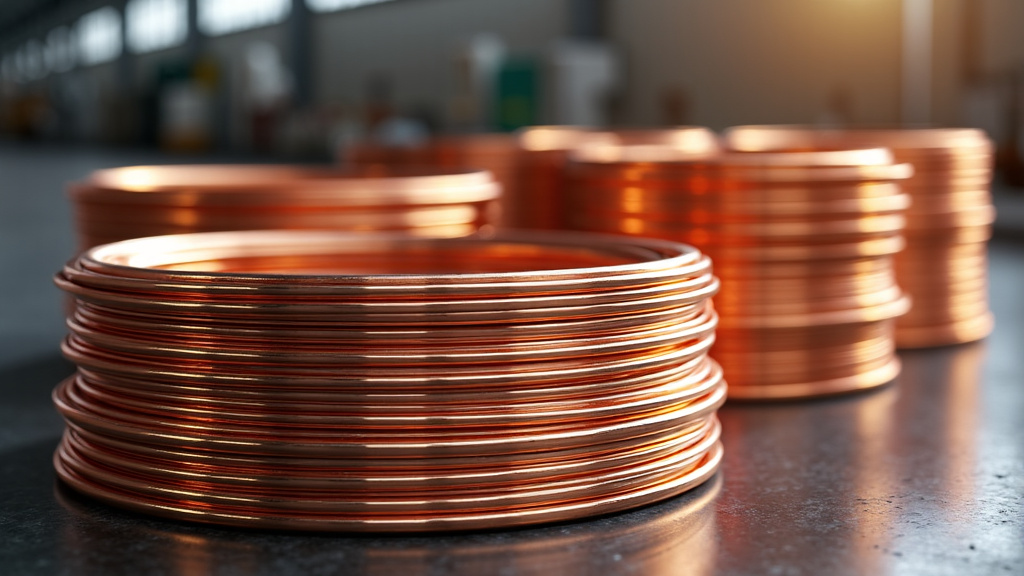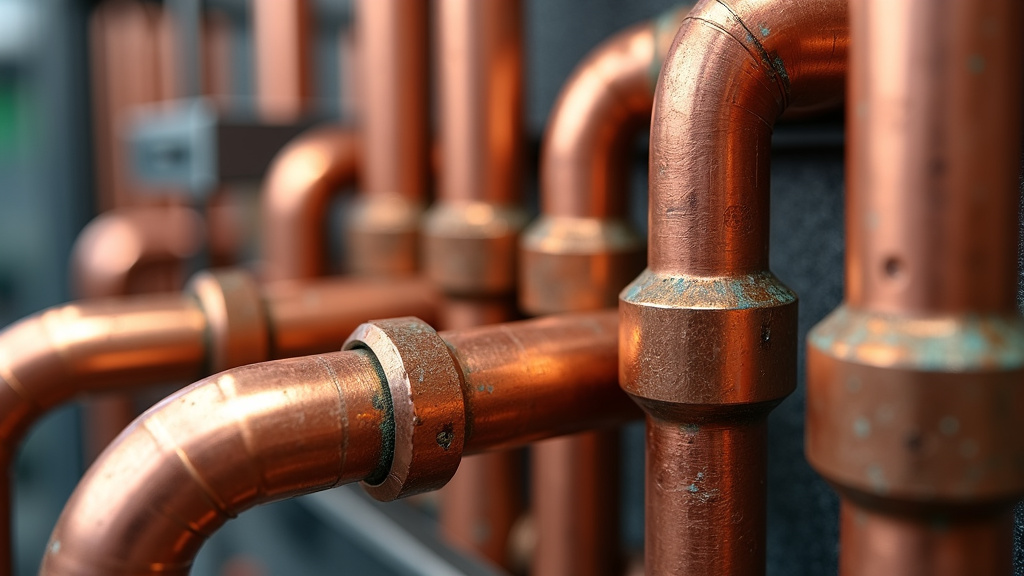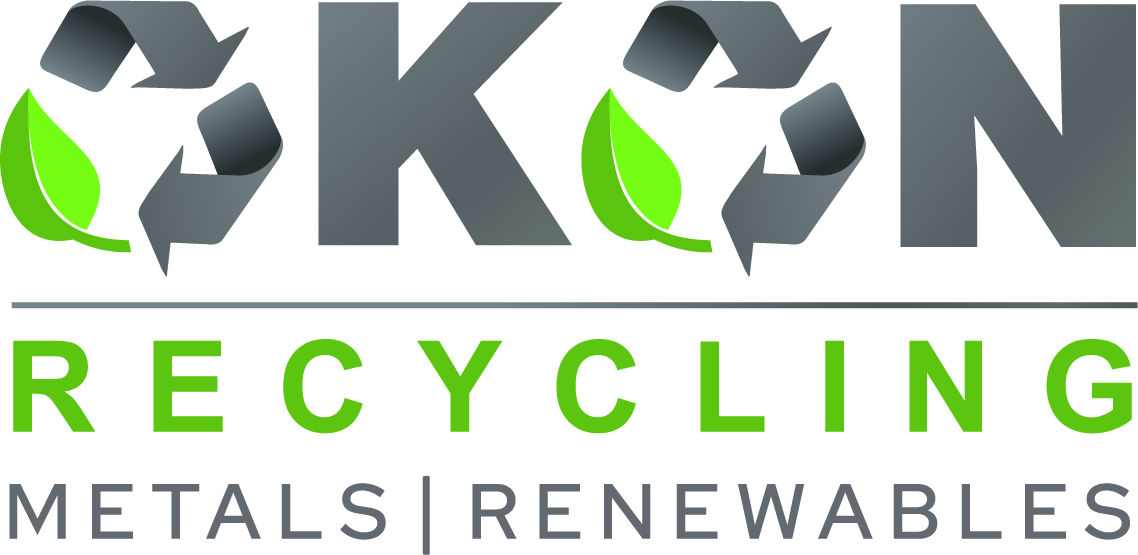5901 Botham Jean Blvd, Dallas, TX 75215
How to Maximize Copper Recycling Profits: An Overview
April 19, 2025Copper scrap prices fluctuate based on a complex interplay of global and local factors.
In 2023, despite predictions that prices would fall below $3/lb, copper demonstrated remarkable resilience, maintaining values above $4/lb throughout much of the year. This stability occurred despite recession-like market conditions and inflationary pressures that initially threatened the market.
Here are some factors that affect copper scrap values.
Factors that Affect Copper Scrap Value

Global Economic Conditions
The overall health of the global economy significantly impacts copper scrap values. In early 2023, the failure of major US banks created ripple effects beyond North America, slowing down production activities in China and other manufacturing hubs. When economic growth is robust, industrial demand for copper increases, driving up scrap prices.
For example, in the third quarter of 2023, despite low demand from European manufacturing plants, scrap prices in Germany rose unexpectedly due to increased exports to Asian markets, particularly India and Pakistan. This demonstrates how global economic shifts can create unexpected opportunities in regional markets.
Supply and Demand Dynamics
The fundamental balance between available copper scrap and market demand remains the primary price driver. Tight copper supply throughout 2023 affected market sentiment, creating upward pressure on prices despite challenging economic conditions. According to the International Copper Study Group, copper scrap accounts for approximately 25-30% of global refined copper production.
Weather events also impact supply chains significantly. Severe conditions, including heavy rains and winter storms, disrupted collection efforts and processing capabilities in several regions during 2023, creating temporary supply constraints that supported higher prices even when downstream purchasing behavior remained cautious.
Industry-Specific Consumption Trends
The demand from specific sectors plays a crucial role in determining copper scrap values. In 2023, despite general economic uncertainty, demand from the renewable energy sector and electric vehicle industries surged, creating a positive market influence. The global shift toward green energy sources benefited markets for solar panels, wind energy systems, and EV production—all of which require substantial copper inputs.
This trend helped offset weaknesses in traditional construction and general manufacturing sectors, highlighting how emerging technologies can reshape demand patterns for recycled materials. The demand sector’s influence was particularly notable in the first quarter of 2023, when it provided crucial support to an otherwise challenged market.
Currency Exchange Rates
As an internationally traded commodity, copper scrap prices are significantly affected by currency fluctuations. When the US dollar strengthens against other currencies, copper generally becomes more expensive for buyers using other currencies, potentially reducing international demand. Conversely, a weaker dollar can stimulate demand from overseas buyers.
This dynamic was evident throughout 2023 as currency markets responded to changing interest rate policies. The Federal Reserve’s interest rate decisions influenced dollar strength, creating corresponding adjustments in copper markets as international buyers calculated their purchasing power.
International Trade Policies
Government regulations and trade policies directly impact copper scrap markets. Import restrictions, tariffs, and environmental regulations shape global trade flows. China’s scrap import inspection procedures resulted in lower exports from certain regions and increased imports from within Asia during 2023.
Similarly, in 2023, the US exported nearly $4.59 billion worth of copper scrap, with key destinations including China, Germany, South Korea, Belgium, and Japan. Chinese buyers often prefer overseas scrap for its consistent quality and potential tax rebate advantages, demonstrating how policy decisions influence purchasing behaviors.
Processing and Transportation Costs
The expenses associated with collecting, processing, and transporting copper scrap significantly impact final market prices. Rising fuel costs, labor expenses, and processing requirements all factor into price calculations. When energy prices increase, as they did periodically throughout 2023, processing costs rise accordingly, potentially squeezing margins for recyclers.
Transportation disruptions also affect market pricing. In late 2023, disruptions to shipping routes in the Red Sea created logistical challenges that impacted international scrap metal shipments, illustrating how geopolitical events can create sudden price pressures through their effects on transportation networks.
How Can Operational Efficiency Boost Copper Recycling Profits?

Advanced Technology Integration
Copper recycling operations can dramatically increase profitability through implementation of state-of-the-art processing equipment. Modern recycling machines can process scrap copper at rates of up to 1 ton per hour, significantly reducing labor costs while improving throughput of materials. This efficiency translates directly to faster turnaround times and the ability to handle larger volumes.
The value proposition becomes clear when examining energy usage data. Recycling copper requires approximately 85% less energy compared to extracting new copper from ore, creating substantial operational cost savings. These savings compound when processing facilities upgrade from manual sorting to automated systems that can separate copper with greater precision.
Automated sorting technologies that employ eddy current separation specifically designed for non-ferrous metals have revolutionized the industry. These systems allow recyclers to process mixed metal streams with minimal human intervention, reducing labor requirements by 30-50% according to industry reports.
Collection and Process Optimization
Effective copper recycling begins with streamlined collection systems. Implementing source separation of copper-rich waste streams significantly reduces contamination rates and subsequent processing costs. Establishing strategic collection points and maintaining clear material specification guidelines ensures higher quality incoming materials.
Shredding and size reduction processes play a critical role in operational efficiency. By increasing the surface area of copper materials, recyclers enhance the effectiveness of subsequent separation steps. Properly calibrated shredding equipment prevents bottlenecks while ensuring materials are properly prepared for downstream processes.
Magnetic separation removes ferrous contamination, protecting valuable equipment from damage while improving the purity of the final copper product. Implementing a multi-stage separation approach allows facilities to gradually refine their copper streams, improving overall recovery rates.
Quality Control Implementation
Stringent quality control measures directly impact profitability in copper recycling. Implementing regular sampling and testing protocols ensures that recovered copper meets or exceeds industry purity standards. Higher purity copper commands premium pricing, with top-grade recycled copper reaching values up to $4,500 per ton depending on market conditions.
Staff training in quality control procedures creates operational consistency and reduces costly errors. When employees can accurately identify different grades of copper and common contaminants, they make better processing decisions that preserve material value. Regular calibration of testing equipment and updating of quality standards keeps operations aligned with market requirements.
Developing relationships with end users who require specific copper grades creates stable demand channels. By understanding and consistently meeting buyer specifications, recyclers can secure long-term contracts with premium pricing structures. This market stability allows for better operational planning and investment decisions.
Strategic Market Positioning
With global copper demand projected to reach 30 million metric tons by 2025, recyclers with efficient operations are positioned to capitalize on growing markets. The renewable energy sector alone is expected to increase copper usage by 70% by 2030, creating substantial opportunities for recyclers who can deliver consistent quality.
Operational efficiency improvements should be paired with strategic marketing that emphasizes sustainability credentials. Every ton of recycled copper conserves approximately 1,500 pounds of sulfur dioxide emissions, a compelling selling point for environmentally conscious buyers and potentially qualifying operations for regulatory incentives.
Continuous improvement processes that regularly assess operational metrics and identify bottlenecks ensure long-term competitiveness. The global copper recycling market is growing at a compound annual growth rate of approximately 4.0%, rewarding operations that consistently invest in efficiency improvements.
What Are Effective Strategies for Sorting and Preparing Copper Scrap?
Proper sorting and preparation of copper scrap are essential steps that can significantly impact its market value. The process begins with accurate identification and separation, followed by thorough cleaning and appropriate sizing. These practices not only maximize financial returns but also contribute to more efficient recycling processes.
Sorting Copper by Type and Grade
The first critical step in copper preparation is sorting your materials by type and grade. Different categories of copper command varying prices in the recycling market, with clean copper fetching premium rates compared to contaminated varieties.
Start with a simple magnet test to separate copper from ferrous metals. Since copper is non-magnetic, any materials that stick to the magnet should be removed and sorted separately. This basic test helps ensure you’re not mixing lower-value metals with your copper collection.
Once you’ve removed magnetic metals, sort your copper into distinct categories based on purity levels. Scrap yards typically recognize several grades, including bare bright copper (highest grade), #1 copper (clean with minimal contamination), #2 copper (containing paint or solder), and insulated copper wire. Keeping accurate records of weight for each category will streamline the selling process.
Cleaning and Removing Contaminants
Clean copper yields significantly higher market prices. Take time to remove any non-metallic attachments such as plastic fittings, rubber insulation, or other contaminants. For copper pipe, this might mean removing attached valves or fittings made from different metals.
Insulated copper wire deserves special attention since the insulation substantially reduces its value. Wire strippers can be used to remove insulation efficiently, potentially increasing the wire’s value by 50% or more. It’s worth noting that burning wire to remove insulation is illegal in most areas and damages the copper quality, so mechanical removal is always preferred.
For copper with paint or other surface contaminants, consider using wire brushes or sandpaper to clean the surface. This extra effort can upgrade your scrap from #2 to #1 copper, resulting in notably better returns.
Sizing and Bundling for Transport
Preparing copper for transport involves careful sizing and bundling. Cutting larger copper pieces into manageable sizes serves multiple purposes: it reduces transportation costs, makes handling easier, and allows for more accurate grading at the recycling facility.
Standard tools like metal shears, pipe cutters, or hacksaws can effectively resize copper materials. For thicker pieces, power tools may be necessary, but always prioritize safety with appropriate protective gear when cutting metal.
After sizing, bundle similar grades of copper together using strong wire or straps. This organization makes weighing more accurate and prevents disputes with buyers. Store bundled copper in a dry area before transport, as moisture can cause oxidation that potentially lowers both grade and value.
When transporting your prepared copper, distribute weight evenly in your vehicle and secure loads properly to prevent shifting. For larger quantities, consider using specialized scrap metal pickup services that offer convenience while ensuring proper handling.
Documentation and Market Awareness
Maintaining detailed records of your sorted copper inventory helps track your recycling efforts and provides documentation for transactions. Note the weight, grade, and condition of each batch before transport.
Stay informed about current copper prices, which fluctuate based on market conditions. Timing your sales during price upswings can maximize returns. Many recycling facilities post their current rates online, allowing for price comparison before transport.
By implementing these systematic sorting and preparation strategies, you’ll not only receive better compensation for your copper scrap but also contribute to a more efficient recycling ecosystem that benefits the environment through reduced energy consumption and conservation of natural resources.
How to Leverage Technology and Market Knowledge for Higher Profits?

In the dynamic world of copper recycling, profitability increasingly depends on strategic implementation of technology and market intelligence. With copper supply constraints expected to intensify—primary production growing at just 2.1% annually compared to scrap production’s 4.2%—recyclers who embrace technological solutions gain a significant competitive edge.
Sophisticated recyclers are implementing specialized software systems that transform inventory management from a manual process to a data-driven operation. These platforms track material quantities, quality grades, and processing stages in real-time, eliminating costly estimation errors and reducing wastage. The most advanced systems integrate with price tracking tools, allowing businesses to time sales optimally based on market conditions.
Advanced Processing Technologies
Technological innovations in processing equipment have revolutionized copper recovery rates, particularly for challenging materials like low-yield wire. Modern wire chopping lines with specialized turbo mill systems can now achieve recovery rates exceeding 99% while consuming less energy per pound processed than legacy systems.
The versatility of today’s recycling systems enables processing of multiple material types through a single line. This adaptability is crucial as waste streams evolve and market demands shift. Smaller operators can start with modest setups like the SWEED S2000 and expand incrementally, while larger operations might implement comprehensive systems with multiple processing stages for higher throughput.
Automation has transformed wire recycling from a largely manual operation to a sophisticated, technology-driven process. Real-time monitoring systems track crucial parameters and automatically adjust settings, resulting in more consistent output quality while reducing labor requirements and associated costs.
Market Intelligence as a Profit Driver
Copper recyclers who make data-driven decisions consistently outperform those relying on intuition alone. The most successful operators maintain comprehensive market awareness through real-time price data services, industry publications, and specialized market analysis tools. These resources provide critical insights into price trends, regional demand variations, and emerging market opportunities.
Geopolitical factors significantly impact the copper recycling landscape. For instance, potential trade tariffs between the US and China have already altered global trading patterns, with Chinese buyers reducing imports of US-origin copper scrap. Savvy recyclers monitor these developments closely, adjusting their business strategies accordingly to maintain profitability despite market uncertainties.
Building strategic relationships with diverse buyers has become increasingly important as market volatility increases. Forward-thinking recyclers are expanding beyond traditional local markets to develop connections with international buyers, specialty processors, and end-users in emerging sectors like renewable energy infrastructure.
Leveraging Digital Marketing
The most innovation-oriented recyclers are enhancing their market position through targeted digital marketing strategies. A well-maintained online presence not only attracts more suppliers of copper scrap but also opens connections to new buyers who increasingly source materials online. Digital channels provide opportunities to showcase technological capabilities and quality standards that differentiate premium operations from competitors.
Some recyclers have implemented customer relationship management (CRM) systems specifically designed for the recycling industry. These platforms help track supplier relationships, buying patterns, and customer preferences, enabling more personalized service and revealing opportunities to increase supply volume or quality through targeted outreach.
By combining advanced processing technologies with sophisticated market intelligence and digital engagement strategies, copper recyclers can significantly boost profit margins while positioning themselves for long-term success in an increasingly competitive market.
Conclusion: Maximizing Long-Term Profitability in Copper Recycling
Maximizing profits in copper recycling demands a multifaceted approach that combines market intelligence, operational excellence, and strategic foresight.
The strategies we’ve explored create a comprehensive framework for sustainable profitability. In today’s volatile market, recyclers who invest in process optimization while maintaining adaptability to market fluctuations position themselves for enduring success rather than short-term gains.
As the copper recycling industry continues to evolve, staying ahead requires continuous improvement and innovation. We encourage you to implement these strategies within your recycling operations, regularly reassessing and refining your processes to enhance efficiency and profitability.
For more information about optimizing your recycling operations or to discuss how these strategies might apply to your specific situation, contact Okon Recycling at 214-717-4083.
